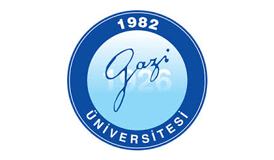European Physics Conference 2018
December 6-7, 2018 Valencia, Spain
Conductive Layered Metal–Organic Frameworks: A Chemistry Problem
1Universitat de Valencia, Spain
2Universidad Catolica de Valencia, Spain
Chemistry is not a self contained discipline: It becomes nanochemistry while physics merges with materials science. A way of transforming matter is manufacturing nanomaterials/devices or composites/layers. More is different. The whole becomes not only more than but different from the sum of its parts. Layered metal–organic frameworks are a modular class of materials, with thickness of a few atomic layers. What are they used for? They exhibit properties distinct from the bulk. Since the seminal work of Geim group on the exfoliation of bulk graphite into graphene, layered materials were obtained and characterized as thin-layered nanostructures. Layered metal–organic frameworks are interesting for materials and applications, because of their atomically thin-layered structure, large surface chemical reactivity, high surface/volume ratio and large chemical adsorption capacity. Their structural, electronic and optical properties were used as a learning method. The interlayer distance is greater for MoS2 because of its layered structure, in which a plane of Mo atoms is sandwiched by other planes of S2– ions. The three strata form a monolayer of MoS2. The periodic table of the elements for some layered materials is analyzed: A steadiness results in interlayer distances for B–N in period 2. Design criteria and structure–property relationships are derived: A series of linear models of interatomic distance between layers, vs. atomic number of layered materials, shows that this distance rises with atomic number. Nonlinear power models improved correlations. Interlayer distance for S deviates from the fits because of the three-strata monolayer of MoS2.
Biography:
Francisco Torrens has completed his PhD from Universitat de Valencia, Spain. He is the professor of physical chemistry, in the Department for Physical Chemistry. He has published more than 400 papers in reputed journals and has been serving as an editorial board member of reputed journals. He has collaborated on projects with Professors Rivail, Tomas-Vert, Salgado and Castellano. His scientific accomplishments include the first implementation in a computer at the Universitat de Valencia of a program for the elucidation of crystallographic structures and the construction of the first computational-chemistry program adapted to a vector-facility supercomputer in a Spanish university.



